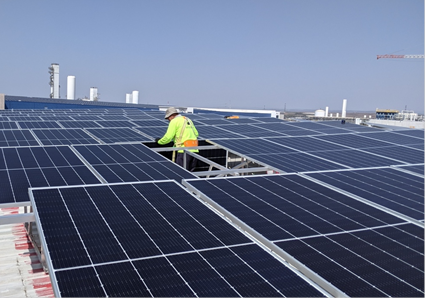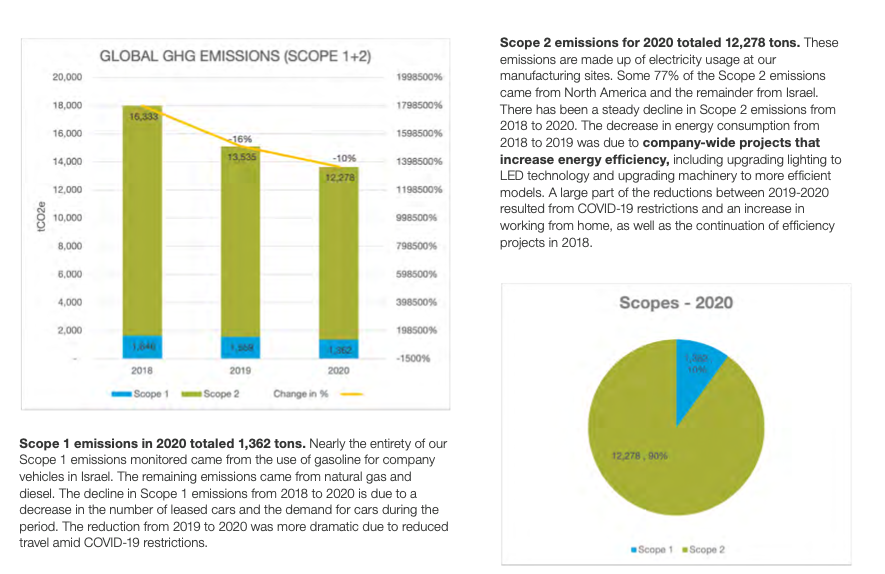Upon establishing a distinct focus on sustainability in August 2021, Stratasys Ltd. (NASDAQ: SSYS) has issued its first report on its environmental, social and governance (ESG) activities. The study is essentially the polymer 3D printing leader’s first steps towards addressing its ESG impact. This meant first assessing what that impact was.
The report follows Global Reporting Initiative (GRI) Standards for sustainability reporting. Upon examining the U.N.’s Sustainable Development Goals (SDGs), Stratasys identified four that were relevant to the company’s operations. These included:
- Quality education: Since education is meant to improve global society, Stratasys is marketing its 3D printing solutions for educational applications.
- Industry, Innovation and Infrastructure: According to the U.N.’s SDG’s industrialization is thought to be beneficial for the world. To support that, Stratasys is supporting users with local, on-demand 3D printing.
- Responsible Consumption and Production: The company aims apply innovation to reduce waste, reuse materials, and recycled packaging.
- Climate Action: Stratasys is working to cut its carbon footprint and aid customers in doing the same.

Image courtesy of Stratasys.
Upon identifying and working with stakeholders, the company assessed its own materiality. It determined that, it could develop the technologies necessary for a 3D printing circular economy that would improve supply chains, cut waste, reduce energy consumption, and increase recycling. Stratasys determined, “It is our commitment to co-create the research and case studies needed to bring the data and proof points to the forefront to demonstrate the sustainability of 3D printing.”
Necessary to addressing its own ecological impact was actually assessing what its current impact is. Stratasys collected data related to its electric, natural gas, water, and waste bills. It also conducted an inventory of its high consumption equipment, such as heating, ventilation, and air conditioning, lighting, water and waste assets. It also researched ways that its own technology could reduce the environmental impact of its customers.

Rooftop solar installed at Stratasys’s facility in Israel, operational as of April 2022. Image courtesy of Stratasys.
Altogether, the company determined that it generated 13,640 tons CO2e (equivalent) in 2020 from direct and indirect emissions. The majority of its direct emissions came from gasoline use for company vehicles in Israel, while the indirect emissions generally came from electricity usage. To mitigate that, it took steps to improve the carbon footprint of its Israel manufacturing facilities, installing 589 solar panels there. The company was able to cut emissions further through the use of LED lighting and upgraded machinery. Additionally, Stratasys aims to use water in a more circular fashion.

Image courtesy of Stratasys.
Stratasys additionally assessed its governance and social environment, determining that 26% of its global workforce is made up of women and that two out of eight members of its board of directors are women. While middle management and non-managers reflected this same ratio, vice presidents and above were 80 percent male. The company also established a diversity, equity, and inclusion (DEI) committee in 2021 that will implement manager training and emphasize a diverse candidate pool, among other activities. It was a Platinum Sponsor of the 2021 Women in 3D Printing Conference. Stratasys also seeks to rely on “an ethically-operated and ecologically sound value chain.”

Image courtesy of Stratasys.
About the report, CEO Yoav Zeif said:
“I believe that global manufacturing is at a crossroads. Due to growing pressure to address supply chain challenges and energy efficiency needs, 3D printing is increasingly being explored to meet such business goals. I believe that during 2022 and into the next decade, rapid growth in the adoption of manufacturing-scale 3D printing will bring additional innovation to the market, improve supply chains and reduce environmental impact.”
The 3D printing industry has long promoted itself as a sustainable one. Most often, additive manufacturing (AM) companies highlight the ability to use only the feedstock necessary to produce an object as a means of reducing material waste. Now, firms are beginning to pursue data and certifications that support their claims. For instance, 6K has just published a report on how its own metal making process cuts carbon emissions significantly.

Image courtesy of Stratasys.
However, most AM firms don’t yet publish their own ESG impact. In total, the report is an impressive and transparent one. Surely, the company can’t account for everything. Furthermore, this is only the beginning before Stratasys can actually execute on its plans. However, it is a very in-depth and detailed report that offers a sharp, yet broad glimpse into the business.
As we’ve discussed in other articles, it’s interesting to note the boundaries of a company’s ethics. If firms like Stratasys are willing to self-reflect, they may begin to uncover aspects of their own operations that would be difficult to reconcile. Will we begin holding businesses accountable for, say, the use of their technologies for military purposes? What about corporate partners that may have been involved in ecologically harmful materials development? Or we might wonder about how a company fits into the human rights abuses of the nation in which it is headquartered. These are all murky ethical questions and ESG analyses may not get to a level where they really go far enough.
Subscribe to Our Email Newsletter
Stay up-to-date on all the latest news from the 3D printing industry and receive information and offers from third party vendors.
You May Also Like
3D Printing News Briefs, April 20, 2024: Manufacturing 4.0 Consortium, Blow Molding, & More
We’re starting with news about a manufacturing consortium in today’s 3D Printing News Briefs, as OPEN MIND Technologies has joined the Georgia Tech Manufacturing 4.0 Consortium. Moving on, industrial machining...
Meltio and Accufacture Unveil Robotic Metal 3D Printer Made in the US
Meltio has partnered with Michigan-based robotics firm Accufacture to introduce Alchemist 1, a robotic cell designed for wire-laser metal 3D printing made in the US. This new system represents a...
3D Printing News Briefs, April 13, 2024: Robotics, Orthotics, & Hypersonics
In 3D Printing News Briefs today, we’re focusing first on robotics, as Carnegie Mellon University’s new Robotics Innovation Center will house several community outreach programs, and Ugogo3D is now working...
Rail Giant Alstom Saves $15M with 3D Printing Automation Software 3D Spark
3D Spark has entered into a three-year deal with the rail giant Alstom. Alstom, a transport behemoth with annual revenues of $16 billion, specializes in the manufacture of trains, trams,...































